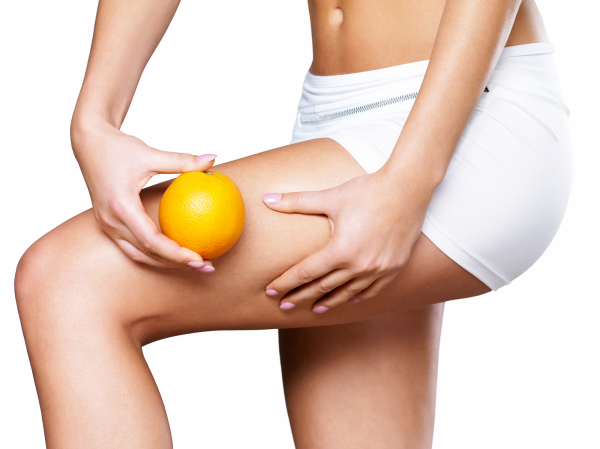
Cellulite Reduction
By Gene Bruno, MS, MHS – Dean of Academics, Huntington College of Health Sciences
Cellulite is more common in women than in men. The reason for this...
Breast Enlargement Botanicals
By Gene Bruno, MS, MHS – Dean of Academics, Huntington College of Health Sciences
 Nowadays, many women who desire larger breasts are opting for surgical breast implants. These implants are controversial, with some scientists saying they’re dangerous, and others saying they cause no harm. This gives rise to the question, “What other methods exist for increasing breast size?” In answering this question, the first place to begin is with a discussion of female hormones.
Nowadays, many women who desire larger breasts are opting for surgical breast implants. These implants are controversial, with some scientists saying they’re dangerous, and others saying they cause no harm. This gives rise to the question, “What other methods exist for increasing breast size?” In answering this question, the first place to begin is with a discussion of female hormones.
During puberty, the female hormones estrogen and progesterone play major roles in stimulating the development of breast tissue in women. Furthermore, during pregnancy high concentrations of estrogen and progesterone are also involved in increasing breast size.1 Anecdotal reports from some women using estrogen-based birth-control pills also indicate breast size increase. One might assume, therefore, that women who desire to increase their breast size could adopt the strategy of using estrogen and progesterone for this purpose. The problem with this strategy, however, is that female hormone therapy is associated with a 1% to 30% increase in the risk of breast cancer, according to some studies.2 The next logical question is, “Is there any way to enjoy the breast enlarging effects of these hormones, without increasing the risk of breast cancer?”
To answer this second question, let’s start by considering what other natural substances have estrogenic properties, and do not increase the risk of breast cancer. Phytoestrogens, in fact, fit this description. Phytoestrogens are natural components from plants which bind to estrogen receptors in the body. Make no mistake, phytoestrogens are not actually estrogen, but since they are capable of binding to estrogen receptors, they can “fool” the body into thinking and reacting as though there were more estrogen present. Furthermore, since they are not actually estrogen, phytoestrogens are not a risk factor in the development of breast or ovarian cancer. As a matter of fact, certain phytoestrogens may even help to reduce the risk of these cancers.3 4
In his book, The Green Pharmacy, acclaimed ethnobotanist Dr. James Duke discussed the possibilities of breast enlargement through the use of certain medicinal herbs. Two of the herbs which he discussed were fenugreek and wild yam. Regarding fenugreek, Duke writes, “The seeds and sprouts have a centuries-old folk reputation as breast enlargers,” and “As I learned in Arkansas, there are also modern testimonials for fenugreek’s effect on the breasts and good reason to believe this herb really works.”5
Both fenugreek and wild yam have in common that they contain diosgenin. Diosgenin has phytoestrogenic properties,6 and is capable of binding to estrogen receptor-sites.7 Furthermore, research in mice demonstrated that diosgenin was, in fact, a growth stimulator of the mammary gland.8 Although this research was not conducted in humans, it certainly lends credence to Duke’s reported testimonials of fenugreek’s effectiveness as a breast enlargement agent.

Besides fenugreek and wild yam, there are other herbs that have been popularly used as part of a breast enlargement strategy. This include motherwort, damiana, saw palmetto, and dong quai.
In both Europe and China, motherwort has been used traditionally to regulate menses. In China, it has been used to stimulate the development of new tissue. Clinical reports from China have confirmed positive results in the use of this herb to treat irregular menstruation, and excessive menstrual bleeding.9 There is some speculation that motherwort has phytoestrogenic properties, although this has not yet been established. What is established, however, is that this herb has demonstrated chemopreventive (i.e., cancer preventing) properties in the mammary glands of laboratory animals, in at least two studies.10 11
Historically in western Mexico, damiana has been used to bring on suppressed menses. It also has a reputation as an aphrodisiac, but this has never been scientifically confirmed.12 What has been confirmed is that damiana is a phytoprogestin. Like phytoestrogens, phytoprogestins are natural components from plants which bind to progesterone receptors in the body. Research indicates that damiana is an herb with one of the highest capacities to bind to progesterone receptors.13 Given progesterone’s natural role in breast development, it may be possible that phytoprogestins such as damiana may have a beneficial role to play as well.
Currently, saw palmetto is best known for its ability to shrink an enlarged prostate gland.14 A century ago, however, this herb was best known as a folk approach to breast enlargement. According to Duke, “Naturopathic physicians continue to recommend it for this purpose.”15
Dong quai has been used extensively throughout the Orient for treating feminine complaints and as a feminine tonic. In China, dong quai is one of the most frequently prescribed herbs for abnormal or suppressed menstruation. In the west, it is used to tone and regulate the female reproductive system.16
The answer to the question posed in the first paragraph is that there may, in fact, be a way to promote breast enlargement without increasing the risk of breast cancer. Since controlled clinical studies have not yet been conducted in humans, however, there is no definitive guarantee of success. Nonetheless, anecdotal evidence, personal testimonials, and some published research do suggest that beneficial results are possible. In any case, the use of the aforementioned herbs seems safer and far less invasive than silicone breast implants. As Dr. Duke said, “...I know that if my daughter wanted her breasts enlarged, I’d certainly encourage her to try natural approaches first.”17
Smart SupplementationTM is a free series of educational literature created by Huntington College of Health Sciences (HCHS) as a public service. Although copyrighted, it may be freely photocopied and distributed, but may not be altered in any way. Smart SupplementationTM is not intended as medical advice. For diagnosis and treatment of any medical condition, consult your physician.
1. Solomon, E. and G. Phillips, Understanding Human Anatomy and Physiology (1987) W.B. Saunders Company, Philadelphia, pp. 336. 2. Anonymous, Am J Nat Med, (1996) 3(4): 7-10. 3. Wang, T., et al, Carcinogenesis, (1996) 17(2): 271-5. 4. Pagliacci, M., et al, Eur J Cancer, (1994) 30A(11): 1675-82. 5. Duke, J., The Green Pharmacy (1997) St. Martin’s Press, New York, pp. 108-111. 6. Mirkin, G., JAMA (1991) 265(7): 912. 7. Zava, D., et al, Proc Soc Exp Biol Med (1998) 217(3): 369-78. 8. Aradhana, et al, Indian J Exp Biol (1992) 30(5): 367-70. 9. Foster, S., 101 Medicinal Herbs (1998) Interweave Press, Loveland, CO, pp. 138-9. 10. Nagasawa, H., et al, Anticancer Res (1992) 12(1): 141-3. 11. Nagasawa, H., et al, Anticancer Res (1990) 10(4): 1019-23. 12. Foster, S., 101 Medicinal Herbs (1998) Interweave Press, Loveland, CO, pp. 62-3. 13. Zava, D., et al, Proc Soc Exp Biol Med (1998) 217(3): 369-78. 14. Plosker, G. and R. Brogden, Drugs Aging (1996) 9(5) p 379-95. 15. Duke, J., The Green Pharmacy (1997) St. Martin’s Press, New York, pp. 108-111. 16. Foster, S., 101 Medicinal Herbs (1998) Interweave Press, Loveland, CO, pp. 68-9. 17. Duke, J., The Green Pharmacy (1997) St. Martin’s Press, New York, pp. 108-111.

By Gene Bruno, MS, MHS – Dean of Academics, Huntington College of Health Sciences
Cellulite is more common in women than in men. The reason for this...

By Gene Bruno, MS, MHS – Dean of Academics, Huntington College of Health Sciences
Cholecystokinin (CCK) is a very interesting...